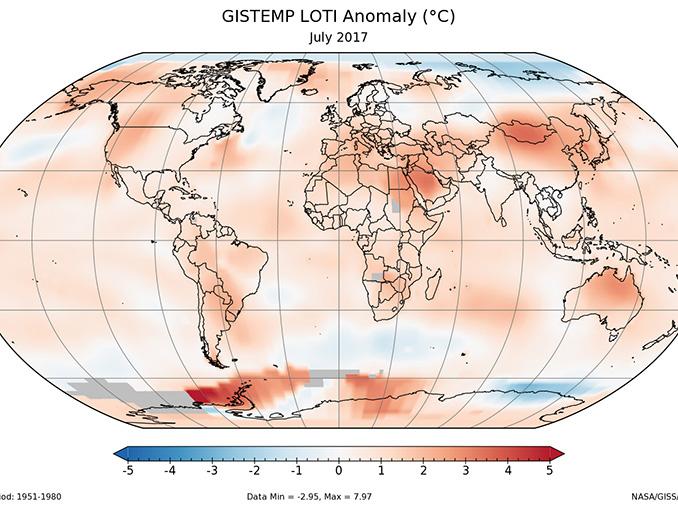World on course for one of warmest years on record even without a natural El Nino boost
Last month, when an iceberg about a quarter the size of Wales calved from the Larsen C ice shelf, was a statistical tie with July 2016 for the warmest July in 137 years on record, Nasa says

Your support helps us to tell the story
From reproductive rights to climate change to Big Tech, The Independent is on the ground when the story is developing. Whether it's investigating the financials of Elon Musk's pro-Trump PAC or producing our latest documentary, 'The A Word', which shines a light on the American women fighting for reproductive rights, we know how important it is to parse out the facts from the messaging.
At such a critical moment in US history, we need reporters on the ground. Your donation allows us to keep sending journalists to speak to both sides of the story.
The Independent is trusted by Americans across the entire political spectrum. And unlike many other quality news outlets, we choose not to lock Americans out of our reporting and analysis with paywalls. We believe quality journalism should be available to everyone, paid for by those who can afford it.
Your support makes all the difference.Last month was the warmest July in the 137 years since records began, Nasa has revealed.
The average global temperature was 0.83C higher than the average for July between 1951 and 1980, Nasa’s Goddard Institute for Space Studies (GISS) in New York found.
This was a statistical tie with the same last year, which was found to be 0.82C warmer than the average.
“All previous months of July were more than a tenth of a degree cooler,” Nasa said in a statement.
Gavin Schmidt, director of the GISS, tweeted that there was a 77 per cent chance that 2017 could be one of the two warmest years on record.
Each of the past three years have set successive record average temperatures, but last year’s figure was boosted by the natural El Nino weather event. It had been thought 2017’s temperature would be lower as this is no longer happening.
A map of temperature changes compared with the 1951 to 1980 average showed the Antarctic Peninsula was particularly warm in July, when a massive iceberg, about a quarter of the size of Wales, split off from the Larsen C ice shelf.

The average temperature is based on a vast number of readings in thousands of different locations, which anyone can view.
“The monthly analysis by the GISS team is assembled from publicly available data acquired by about 6,300 meteorological stations around the world, ship- and buoy-based instruments measuring sea surface temperature, and Antarctic research stations,” Nasa said.
“The modern global temperature record begins around 1880 because previous observations didn’t cover enough of the planet.
“Monthly analyses are sometimes updated when additional data becomes available, and the results are subject to change.”
Join our commenting forum
Join thought-provoking conversations, follow other Independent readers and see their replies
Comments